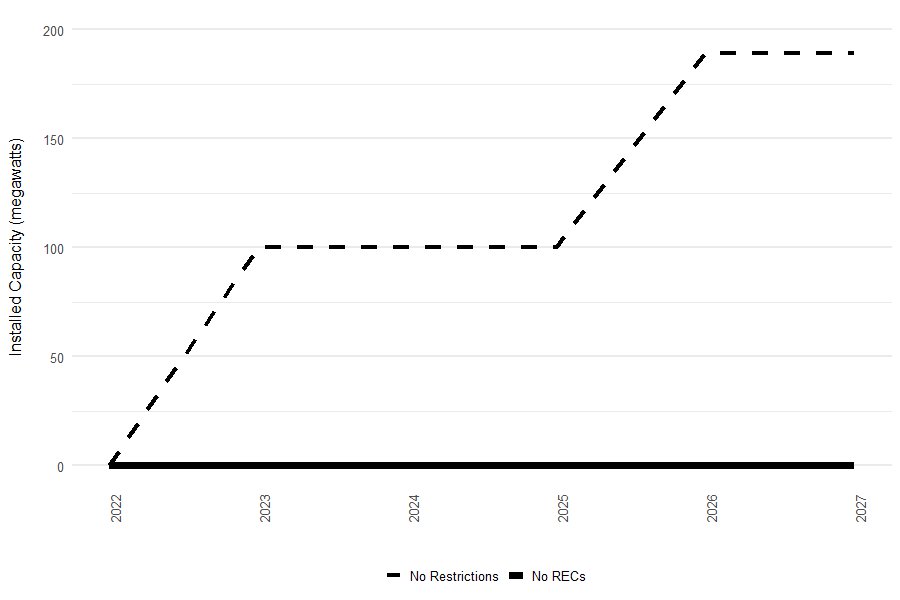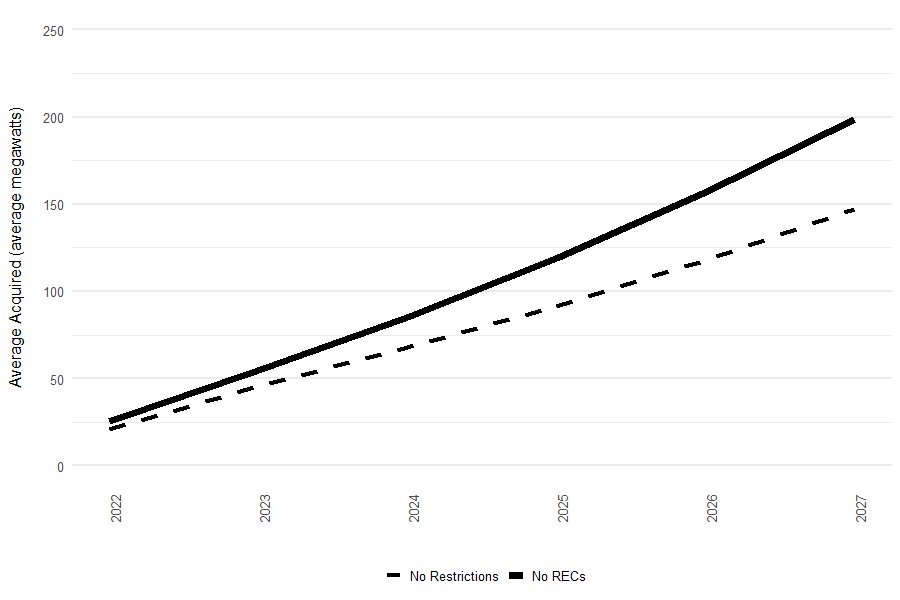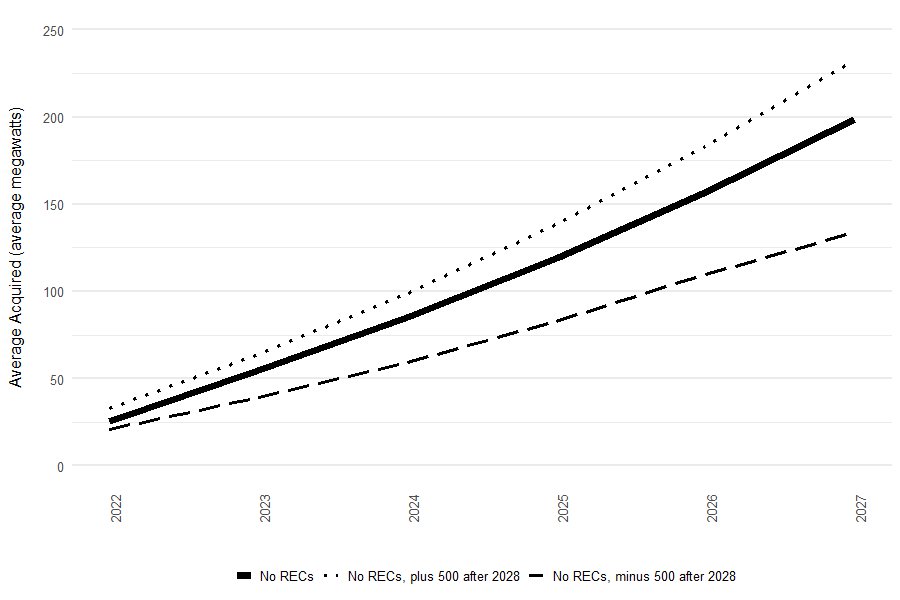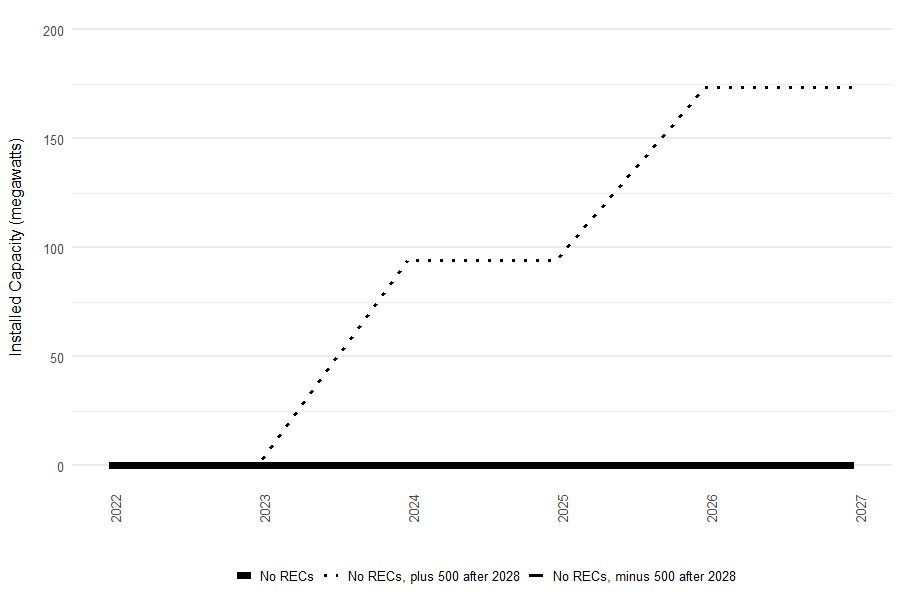Bonneville is a central part of the Northwest electric system. A large portion of the transmission in the region is owned and operated by Bonneville. The Council considers a broad array of information from all the various analyses included in this plan when making recommendations to Bonneville. One key part of that perspective is understanding the obligations Bonneville has to provide electricity and the federal resources and contracts that are designated to be used to meet those obligations – that is, the Bonneville portfolio.
The Council analysis see a small need for additional resources. The Council describes the existing federal resource capability and obligations in Section 7: Forecast of Federal Power Resources and Obligation to Provide Electricity. Under many of the forecasts for an increase in the Bonneville obligation, the Council sees that resources are sufficient to meet the need. However, there are infrequent circumstances where increase in the demand for electricity exceeds the seasonal firm energy in the Federal power system. Our analysis shows the least-cost way to meet these needs is a combination of energy efficiency, demand response, and renewable resources.
Part of this analysis was looking at the cost of resources. When examining the cost of renewable resources, the treatment of Renewable Energy Credits (RECs) altered the amount of renewable generation additions to the portfolio. When the RECs were assumed to offset the cost, more renewable resources were selected as part of the portfolio. However, currently Bonneville passes RECs through to its customer utilities, so they do not accrue value to the Bonneville portfolio. When excluding the value of the RECs, the addition of renewable generation is much more limited.
Renewables Build with and without Accounting for the value of RECs

The treatment of RECs also impacts the amount of energy efficiency acquired. Because renewable resources meet part of the energy need, there is a reduced need for energy efficiency.
Energy Efficiency Acquired with and without Accounting for the value of RECs

The Council also tested the demand response measures seen to be low-cost and part of the resource additions in the regional analyses. The measures examined were Demand Voltage Regulation (DVR) and Time-of-Use rates (TOU). These measures reached 300 megawatts of capacity by 2027 in the portfolio.
The Council also examined the implications of a change in obligation after the Bonneville contracts expire in 2028.[1] The purpose was to see if there would be near-term changes in resource additions based on the obligation change in 2028. To test this, the Council added and removed 500 average megawatts from the Bonneville obligation in 2028. When adding obligation, the Council saw additional near-term resource additions as the least-cost solution. When removing it, the Council saw lower near-term resource additions. Adding to the obligation in 2028 increased the addition of energy efficiency by 2027 by 35 average megawatts. Decreasing the obligation removed around 65 average megawatts of energy efficiency.
Energy Efficiency Acquired with Obligation Changes After 2028

Similarly, for renewable resources – when excluding the value of RECs – our analysis shows an increase of almost 175 megawatts of nameplate capacity additions by 2027 when the obligation increases in 2028. Decreasing the obligation does not impact near-term resource additions and shows no additions of renewable resources after 2028.
Renewables Build with Obligation Changes After 2028

[1] The eventual size of Bonneville’s obligation to serve after 2028 adds a level of uncertainty to our needs forecast that may not be fully realized until the end of this Plan’s action period and may require further analysis by the Council to determine the full impact of Bonneville’s future contractual obligations.



